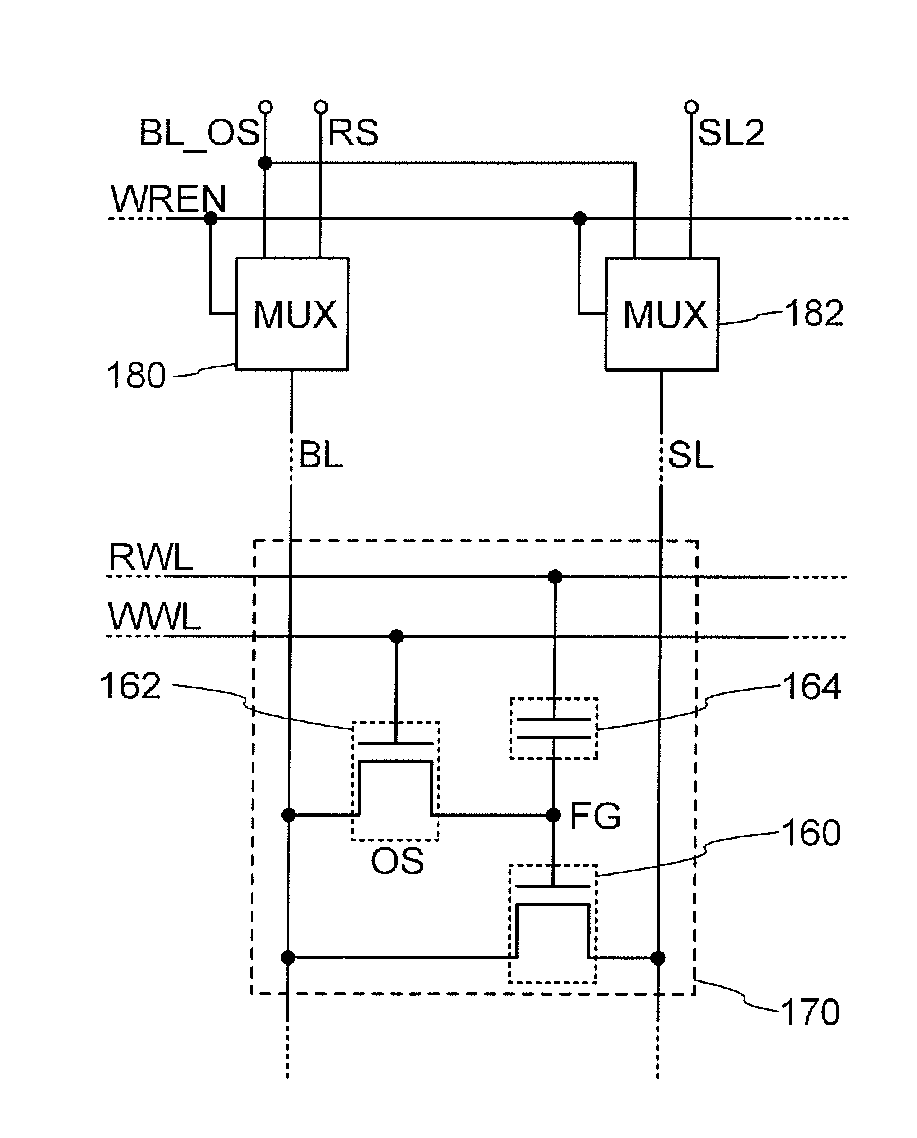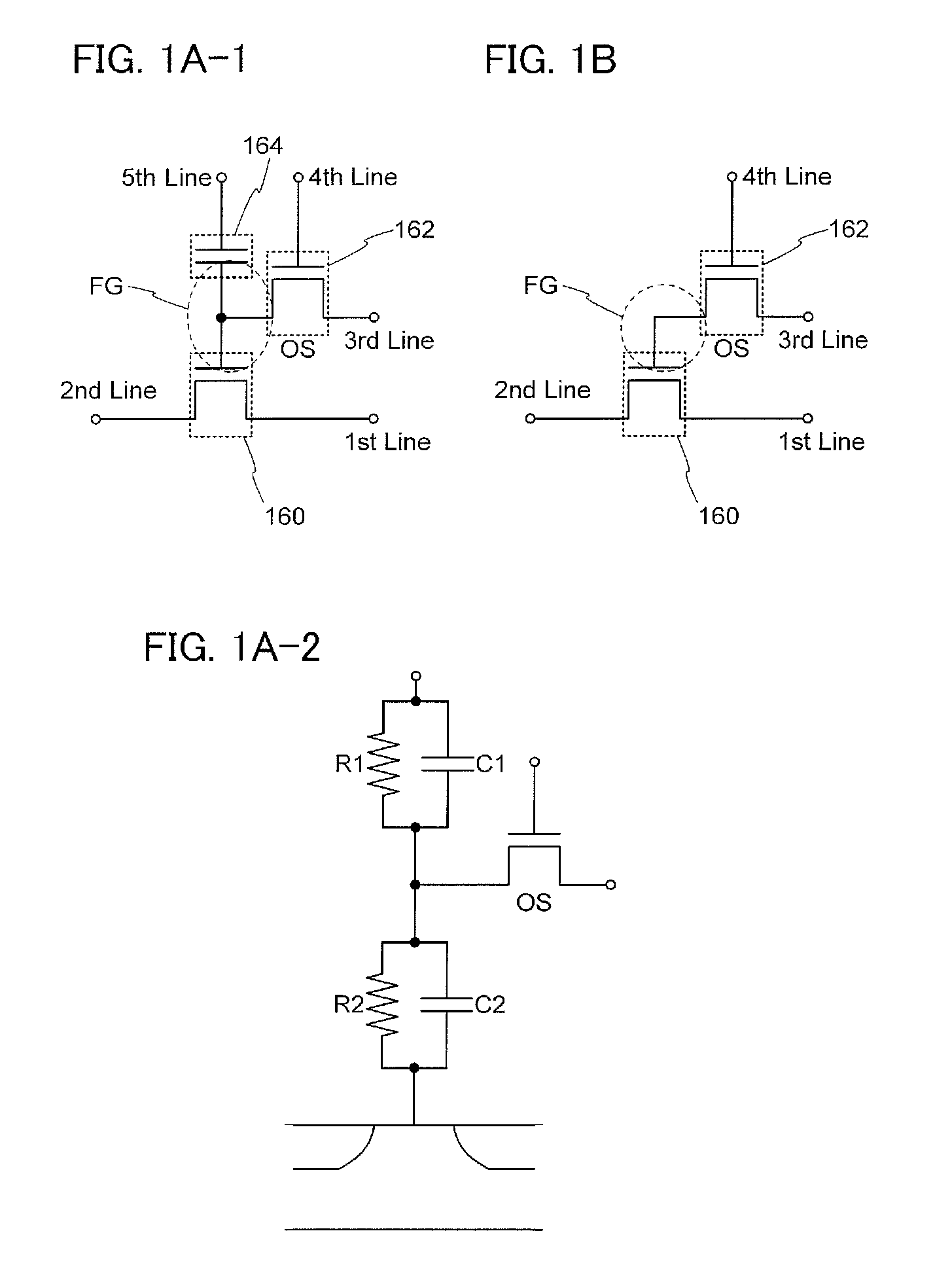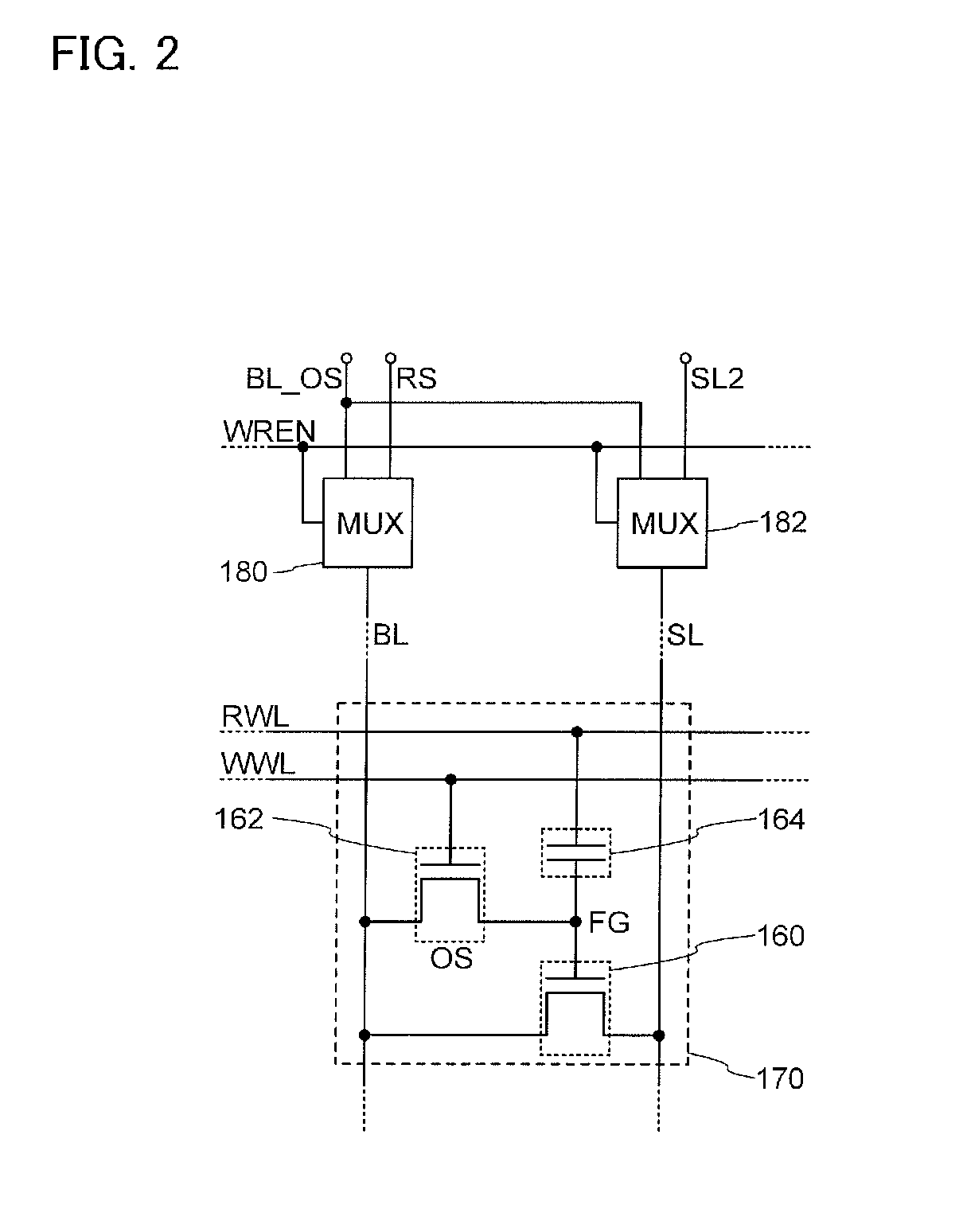Semiconductor device and driving method of the same
a technology of semiconductor devices and driving methods, applied in semiconductor devices, digital storage, instruments, etc., can solve the problems of increasing the cost per storage capacity, difficult to adequately reduce power consumption, short data holding period, etc., and achieve the effect of reducing power consumption
- Summary
- Abstract
- Description
- Claims
- Application Information
AI Technical Summary
Benefits of technology
Problems solved by technology
Method used
Image
Examples
embodiment 1
(Embodiment 1)
[0051]In this embodiment, a basic circuit structure and operation of a semiconductor device according to one embodiment of the disclosed invention will be described with reference to FIGS. 1A-1, 1A-2, and 1B and FIG. 2. Note that in each of the circuit diagrams, “OS” may be written beside a transistor in order to indicate that the transistor includes an oxide semiconductor.
[0052]First, the most basic circuit structure and its operation will be described with reference to FIGS. 1A-1, 1A-2, and 1B. In the semiconductor device in FIG. 1A-1, a first wiring. (a 1st line) and a source electrode (or a drain electrode) of a transistor 160 are electrically connected to each other, and a second wiring (a 2nd line) and the drain electrode (or the source electrode) of the transistor 160 are electrically connected to each other. In addition, a third wiring (a 3rd line) and a source electrode (or a drain electrode) of a transistor 162 are electrically connected to each other, and a ...
embodiment 2
(Embodiment 2)
[0099]In this embodiment, an application example of the semiconductor device described in the above embodiment will be described. Specifically, an example of a semiconductor device in which the semiconductor devices described in the above embodiment are arranged in a matrix will be described with reference to FIGS. 3 and 4.
[0100]FIG. 3 illustrates an example of a circuit diagram of a semiconductor device including m×n memory cells 170.
[0101]The semiconductor device according to this embodiment includes m (m is an integral greater than or equal to 2) write word lines WWLs, m read word lines RWLs, n (n is an integral greater than or equal to 2) bit lines BLs, n source lines SLs, a memory cell array in which the memory cells 170 are arranged in a matrix of m rows (in a vertical direction)×n columns (in a horizontal direction), multiplexers 180 connected to respective n bit lines BLs, multiplexers 182 connected to respective n source lines SLs, a first driver circuit 190, ...
embodiment 3
(Embodiment 3)
[0114]In this embodiment, a structure and a manufacturing method of a semiconductor device according to an embodiment of the disclosed invention will be described with reference to FIGS. 5A and 5B, FIGS. 6A to 6D, FIGS. 7A to 7D, FIGS. 8 to 8D, and FIGS. 9A to 9C.
[0115]FIGS. 5A and 5B illustrate an example of a structure of a semiconductor device. FIG. 5A illustrates a cross section of the semiconductor device, and FIG. 5B illustrates a plan view of the semiconductor device. Here, FIG. 5A illustrates a cross section taken along line A1-A2 and line B1-B2 in FIG. 5B. The semiconductor device illustrated in FIGS. 5A and 5B includes the transistor 160 including a first semiconductor material in a lower portion, and the transistor 162 including a second semiconductor material in an upper portion. Here, the first semiconductor material and the second semiconductor material are preferably different from each other. For example, the first semiconductor material may be a semico...
PUM
 Login to View More
Login to View More Abstract
Description
Claims
Application Information
 Login to View More
Login to View More - R&D
- Intellectual Property
- Life Sciences
- Materials
- Tech Scout
- Unparalleled Data Quality
- Higher Quality Content
- 60% Fewer Hallucinations
Browse by: Latest US Patents, China's latest patents, Technical Efficacy Thesaurus, Application Domain, Technology Topic, Popular Technical Reports.
© 2025 PatSnap. All rights reserved.Legal|Privacy policy|Modern Slavery Act Transparency Statement|Sitemap|About US| Contact US: help@patsnap.com



